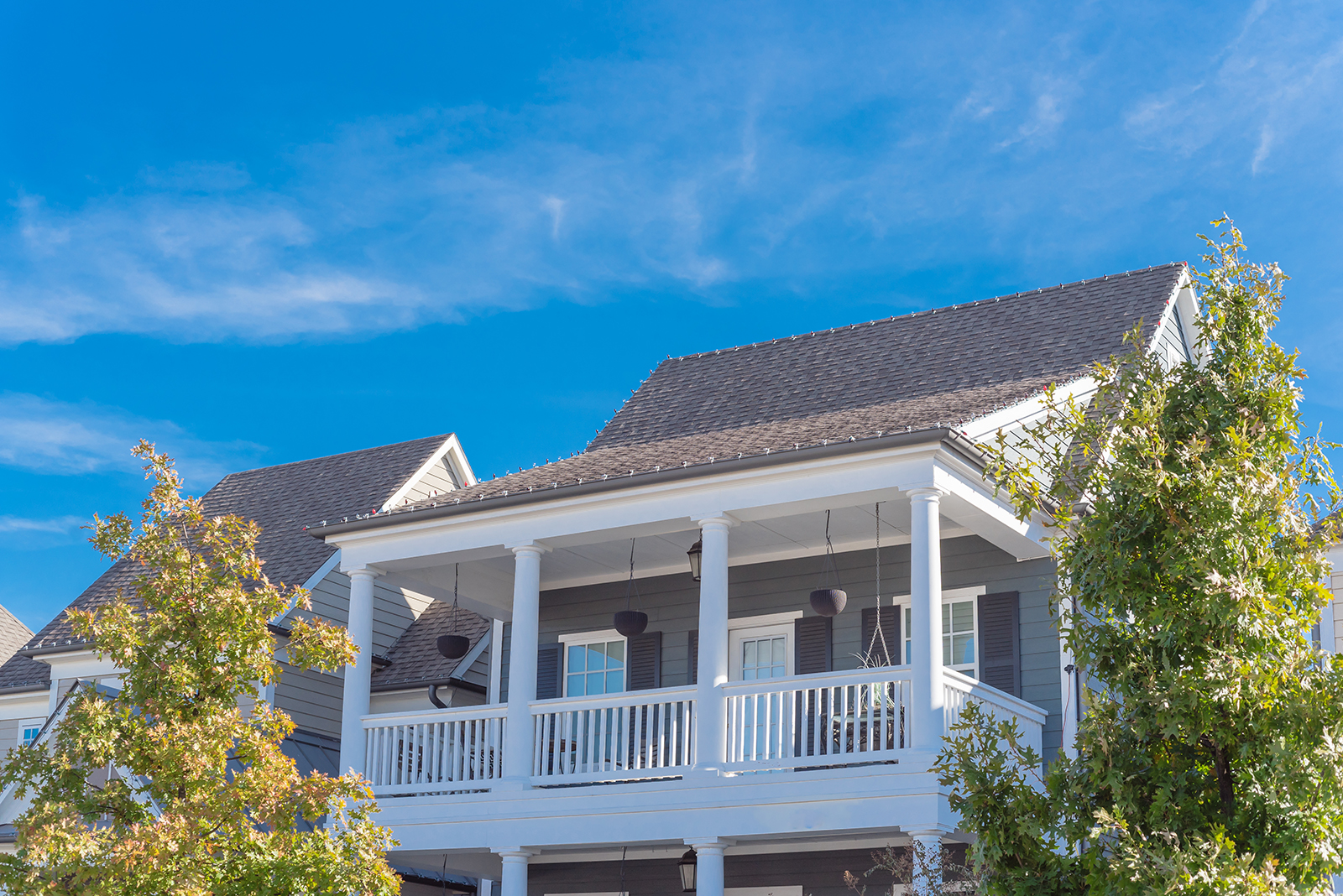In this episode of Uncommon Area, host Matthew Holbrook sits down with Ryan Darby, Regional Manager at Action Property Management, to discuss the critical details of California Senate Bill 326, also known as the Balcony Bill. They delve into the specific requirements for mandatory inspections of exterior, elevated elements in condominium and townhome communities.
Overview of SB 326
- Applicability: SB 326 applies to exterior, elevated elements of a condominium or townhome community that are 6 feet or more above the ground, made predominantly of wood, and protrude from the main structure. The buildings must contain three or more units.
- Examples of Structures: Balconies, staircases, and elevated walkways.
Inspection Requirements
- Who Must Inspect: A licensed structural engineer or architect.
- Types of Inspections:
- Visual Inspection: Conducted on 75% to 85% of the community, assessing visible parts of the structure like the deck’s exterior, connections to the building, and support posts.
- Physical Inspection: Required for 15% to 25% of the community, especially where wood structures are enclosed by stucco, necessitating small openings to inspect internal structural elements.
Inspection Criteria
- Inspection Focus: Checking structural integrity, railings (ensuring gaps are no more than 4 inches), and drainage (especially seals around deck drains).
- Timeline: The bill was passed in 2019 with a compliance deadline of January 1, 2025.
- Frequency: Inspections must be repeated every nine years.
Learn how to pratically finance HOA repair projects with Dirk Petchul
Subscribe: Apple Podcasts | Spotify | RSS
Read Transcript
[00:00:25.590] – Matthew Holbrook
Welcome to the Uncommon area. I’m Matthew Holbrook, and this episode is all around legally required deck inspections. Joining me to talk about that is Action Property Management Regional Manager Ryan Darby.
[00:00:42.410] – Matthew Holbrook
Ryan, just to get this rolling, this is all revolving around SB 326. Maybe you could just give us a very basic introduction. What do we need to know about SB 326?
[00:00:57.410] – Ryan Darby
Yes, so SP 326 is formerly called the Balcony Bill but it’s actually about all exterior, elevated elements of the building that protrude outside of the building that are supported by wood.
[00:01:14.140] – Matthew Holbrook
Let’s stop right there. I just want to make sure we have clarity here. SB 326 applies to all elevated. First criteria is elevated elements. Anything that’s elevated in a condominium association, we’re not talking about single family home.
[00:01:33.150] – Matthew Holbrook
It’s something that’s actually in a condominium or a townhome community that’s elevated, that protrudes from the main portion of the building and is connected by wood. If I was to summarize it, those are the three specific criteria, right?
[00:01:47.280] – Ryan Darby
That’s correct. The main criteria that the State set is that the elevated elements are 6 feet or more above the ground. Predominantly made of wood and that it could be balconies, staircases decks that are walkways on second or third floor of the buildings.
[00:02:10.430] – Ryan Darby
But also, a unique item is that it has to be a building that has three or more units. If the community is comprised of duplexes throughout the community, it doesn’t apply.
[00:02:21.250] – Matthew Holbrook
Okay, so three or more units is also an important component. All right, good to know. Then the bill says that these elements that are 6 feet and connected by wood, elevated and so forth, that they have to be inspected. What does that even mean? What is an inspection? Who has to do it? Talk to us about that.
[00:02:50.380] – Ryan Darby
Yes, the inspection has to be done by a structural engineer or an architect with appropriate licensing for that. The inspections, there are two types of inspections that can occur. The first is a visual inspection, which will be done on 75% to 85% of the community, where they’re looking at the exterior of the deck, the connections to the building. They’re also going to check any of the support posts that are holding it up that are visible.
[00:03:20.860] – Ryan Darby
But then there’s the physical inspections, which are a little more cumbersome. If you have just a wood structure, it’s actually relatively simple because they can see all of the structural elements. But a lot of communities, they’ve enclosed the wood with stucco, where they’ll end up having to open several three inch holes to get a little camera up in there so that they can inspect the actual structure itself.
[00:03:48.360] – Ryan Darby
They’ll do that for 15% to 25% of the community, depending on the maintenance records that are provided to them ahead of time and then what they see on the visual inspection.
[00:03:59.310] – Matthew Holbrook
All right, this might be an obvious or basic question, but what are they inspecting for?
[00:04:05.260] – Ryan Darby
For all the balconies when they do the inspection, which is predominantly the visual, so the balcony deck, regardless of an HOA or a homeowner responsibility, they inspect that the transition from the deck to the building. They’ll check the rails and check that the railings are to current code, which is the bars can’t be more than 4 inches apart.
[00:04:31.200] – Ryan Darby
If they’re more than four inches apart, they’ll be sighted as part of the inspection, which a lot of communities have railings that are more than 4 inches apart. Usually four and a quarter, four and a half, which will be one of the things that would have to be fixed as part of it.
[00:04:48.510] – Ryan Darby
They’re going to check the drainage. The big thing is that the drain is sealed when it’s in the deck. A lot of the inspections so far, they’ve noticed that the deck drain itself doesn’t have any sealant around it and is either dripping or has a little bit of water that gets through when it gets wet.
[00:05:08.610] – Matthew Holbrook
Do you know when this bill was passed?
[00:05:11.290] – Ryan Darby
Yes. It was passed in 2019 after they had removed HOA from the 2018 bill, which applies to apartments and hotels.
[00:05:21.700] – Matthew Holbrook
Okay, so there was a 2018 bill that didn’t apply to HOAs, and then 2019 HOAs were included?
[00:05:28.460] – Ryan Darby
Correct.
[00:05:30.310] – Matthew Holbrook
What is the time frame in which these inspections have to take place?
[00:05:34.550] – Ryan Darby
For both SB 326, which is for HOAs and then SB 721, which is for apartments, hotels and motels, the deadline is January 1 of 2025.
[00:05:47.690] – Matthew Holbrook
We’re coming up on we’ve got a little bit more than two and a half years. Once you’ve done the inspection, is it a one time thing or is there a certain frequency that has to continue thereafter?
[00:06:00.830] – Ryan Darby
Once it’s done, it has to be reinspected within nine years.
[00:06:06.130] – Matthew Holbrook
You get it done by January 1, 2025 and then after that, you need to make sure you do it every nine years.
[00:06:14.020] – Ryan Darby
Correct.
[00:06:16.020] – Matthew Holbrook
Then the inspections are going to identify theoretically deficiencies in the decks or the other elements. Then is there some time frame…The inspection itself has to be completed in that time frame but the remedies for those efficiencies, is there a time frame that that has to be addressed?
[00:06:39.060] – Ryan Darby
It depends on who you use for the inspection firm. What we’ve seen is most common practice, is they’ll label them as green, which means it passes no issue. Yellow is something that they want to see addressed before the next inspection in nine years and then red means that they’re likely going to be shutting down the balcony until the repairs are made because this report gets turned into the city within 15 days of the last unit being inspected.
[00:07:09.460] – Matthew Holbrook
I see. It’s really up to the inspector to determine what the speed is in which that needs to be addressed?
[00:07:17.190] – Ryan Darby
Correct.
[00:07:17.790] – Matthew Holbrook
Do you have any just ballpark range of what associations are paying for these types of inspections?
[00:07:24.150] – Ryan Darby
Depending on the number of units, but then also how they’re composed and one thing that we’ve seen is if you provide the inspecting firm with historical records, it’ll help get the price lower because they’ll have a better idea of what they’re going to be finding. But generally speaking, it’s between 250 and 450 per unit.
[00:07:45.220] – Matthew Holbrook
Okay. Then you said providing them with the records. That would be something that would be an important part of the equation just to keep the cost down. Is there anything else that managers or board members should be thinking about when they go out to get this set up?
[00:08:01.490] – Ryan Darby
Yes. One of the big things is to make sure you pick the right companies to bid for the inspections. You’re not supposed to be using a company that is affiliated with a contracting firm and that’s to prevent conflicts of interest.
[00:08:18.070] – Ryan Darby
We’ve seen a few companies that have hired on a structural engineer or they’ve partnered, and those are not really the firms you want to use. You want to have a separate entity that has no affiliation to a general contractor who would be doing the work afterwards.
[00:08:34.500] – Matthew Holbrook
Do you have any sense right now as to kind of what the backlog is for this? If you were to call up somebody who’s a qualified inspector, what’s the lag time to actually have them come out and do the inspection?
[00:08:45.230] – Ryan Darby
Right now we’re seeing about six to eight months. There’s not a lot of firms yet that are willing to put their license on the line until they understand more. Even though this bill was passed in 2019, there was a lot of back and forth on the wording of the bill between the HOA attorneys and the engineering firm attorneys on what should be included in the inspections, what shouldn’t be included in the inspections.
[00:09:13.860] – Ryan Darby
A lot of communities are just now starting to hit the ground running. But one of the challenges we’re seeing is that because apartments and motels and hotels have the same deadline as HOA, the firms that are willing to do it are already getting booked up relatively quickly.
[00:09:32.720] – Matthew Holbrook
Then once they complete the inspection, I’m assuming this would vary significantly depending on the size of the community. But what’s generally the turnaround time to get the final report?
[00:09:45.370] – Ryan Darby
Well, you’ll have the report within two weeks.
[00:09:48.350] – Matthew Holbrook
Oh, really?
[00:09:48.980] – Ryan Darby
Once it’s done and it will be submitted to the city at the same time.
[00:09:54.420] – Matthew Holbrook
I guess what I’m getting at is that the eight or nine month time frame is probably what association should be looking at from the time that they actually make a selection for an inspector and get that ball rolling.
[00:10:06.710] – Matthew Holbrook
While we have maybe two and a half years to get that done, you really probably don’t want to be waiting around a whole lot. I would imagine as we get closer to the finish line on that or that deadline –
[00:10:18.250] – Ryan Darby
It’s going to get busier and busier.
[00:10:20.260] – Matthew Holbrook
Right. Then what are the consequences, do we know if an association doesn’t comply within that time period?
[00:10:28.210] – Ryan Darby
It depends on the city that you’re in. Some cities are being proactive about it and actually recording the associations that this complies with and which ones don’t. But also, there’s been talk that insurance companies are going to start asking for the report as a part of the bidding process for the annual renewal.
[00:10:49.030] – Ryan Darby
Nothing has been officially yet, but there’s been talks in their industry that this will be one of the main items that they look for. One of the other items that we’ve seen is with federally for Freddie Mac and Fannie Mae. They’re actually asking for a copy of the report if it’s been completed yet, which could affect loans after the January 1, 2025 deadline.
[00:11:15.370] – Matthew Holbrook
The most significant consequences, you potentially could have your association be uninsurable and you could also have a complete lack of financing, potentially, or at least for certain type of financing for sales within the community?
[00:11:30.000] – Ryan Darby
That’s correct.
[00:11:32.230] – Matthew Holbrook
Anything else that managers or board members should know about this bill?
[00:11:37.350] – Ryan Darby
The sooner you get started, the better. Just three months ago, the backlog was only three months to get an inspection done and it’s already up to six to eight months, depending on the firm. We are expecting it to get wider and wider.
[00:11:51.970] – Ryan Darby
There’s only about 20 companies in the State right now that are willing to do the inspections. There’s not a whole lot of firms right now that are willing to do the inspections and have their license on the report that goes to the city and is essentially there forever.
[00:12:08.480] – Matthew Holbrook
Well, that’s great. Well, that’s super helpful. Really appreciate all the work you’ve done to research and be up to speed on all of this. I think this is a very helpful episode, so I hope it was helpful for you and and we’ll just wrap it up here.





